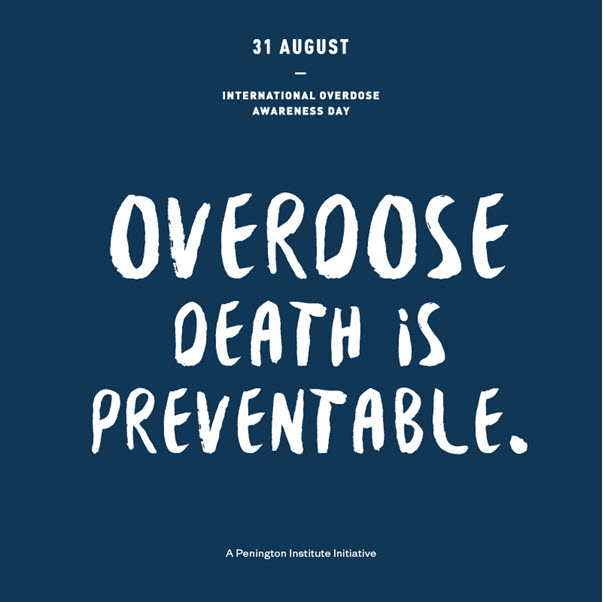Understand and prevent overdose
What is overdose?
According to harmreduction.org:
“Overdose (OD) happens when a toxic amount of a drug, or combination of drugs overwhelms the body.”
Symptoms of overdose vary depending on substance, but common symptoms include nausea, respiratory or cardiac distress, and disorientation. Overdose can lead to serious health events such as seizures, strokes, or cardiac arrest. According to the Penington Institute’s Australia’s Annual Overdose Report 2021, 1 in 30 overdoses is fatal.
Most substances can lead to overdose — even supplements like Vitamin C can be toxic in large quantities — so if you plan to drink or take drugs, or will be around people who are, it’s helpful to know the risks, how to spot a problem, and what to do in the event of an overdose. Thankfully, a lot of people are working to educate people to prevent fatal overdose. Check out the resources below.
International Overdose Awareness Day Resources

Penington Institute coordinates International Overdose Awareness Day every year on August 31. They have created resources to help the public understand and prevent overdose. Check out these fact sheets to help you understand what to do in the event of different kinds of overdose. There are even printable posters you can put up to help spread education and awareness about what to do.
A4 Fact Sheets
- Alcohol overdose
- Depressants overdose (for example, benzodiazepines like Valium)
- Opioids overdose (heroin or painkillers like codeine, fentanyl or oxycodone)
- New Psychoactive Substances (NPS) overdose (various synthetic drugs that mimic substances like cannabis, ecstasy, cocaine or methamphetamines — sometimes known as bath salts or synthetic cannabis)
- Stimulants overdose (such as amphetamines, cocaine, or MDMA)
- Crystal methamphetamine/Ice overdose
Harm minimisation services
Learn more about overdose management from the harm minimisation service in your state.

